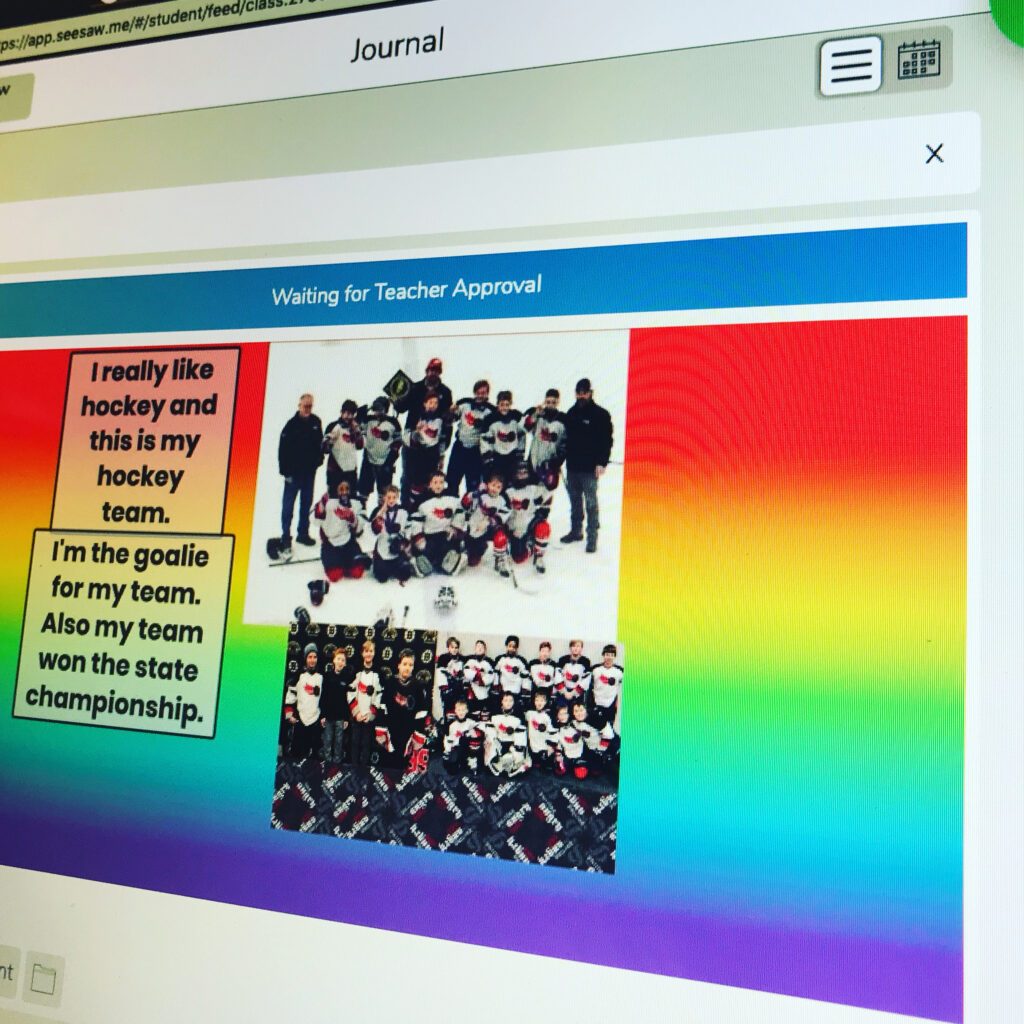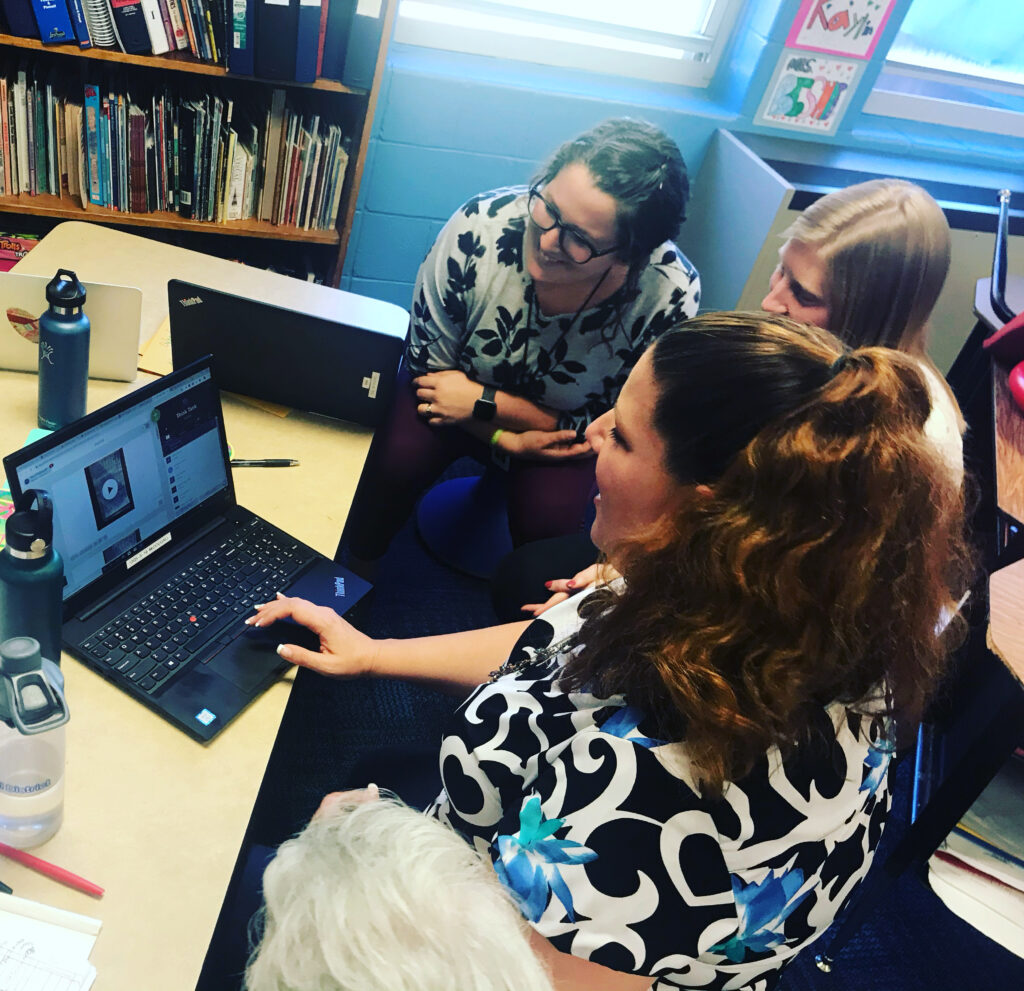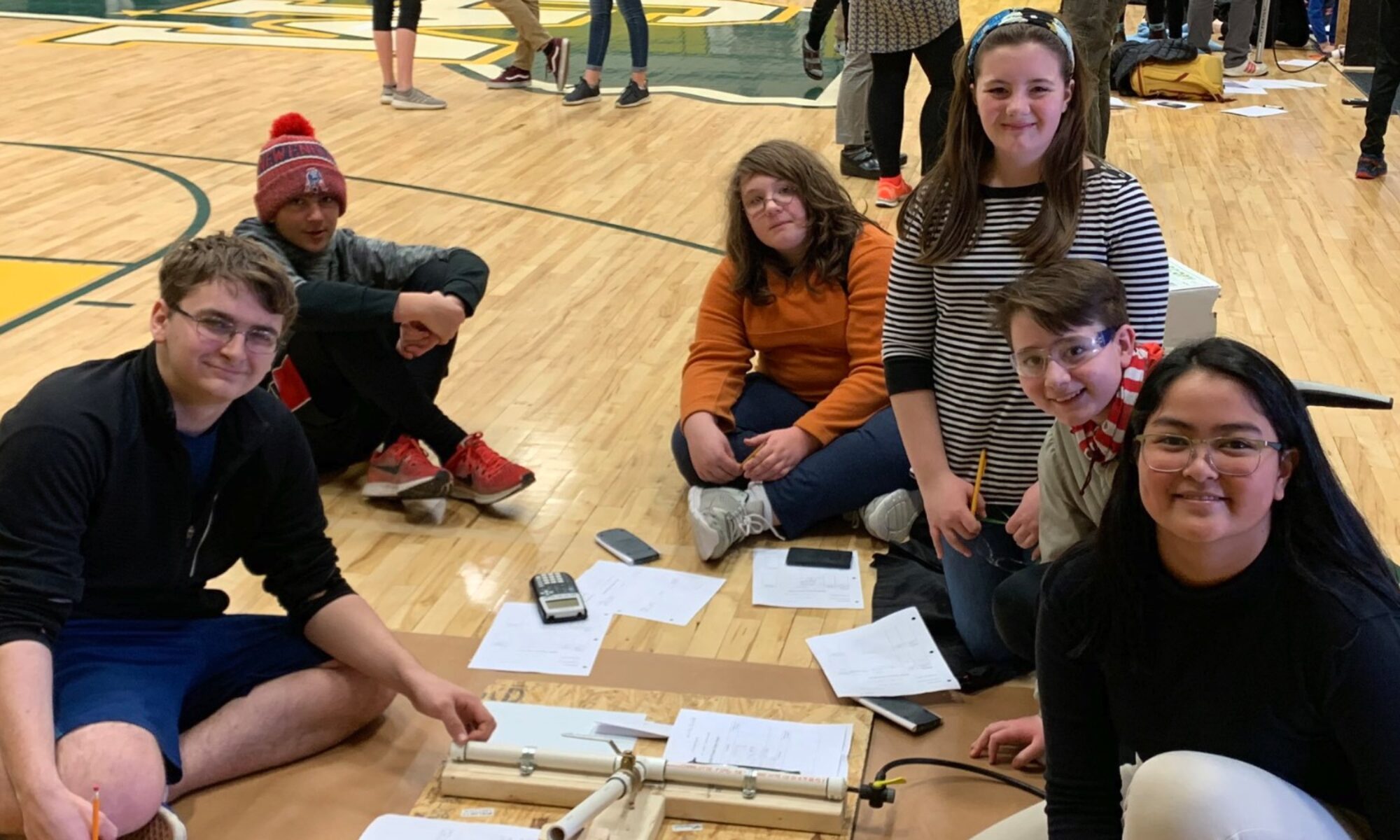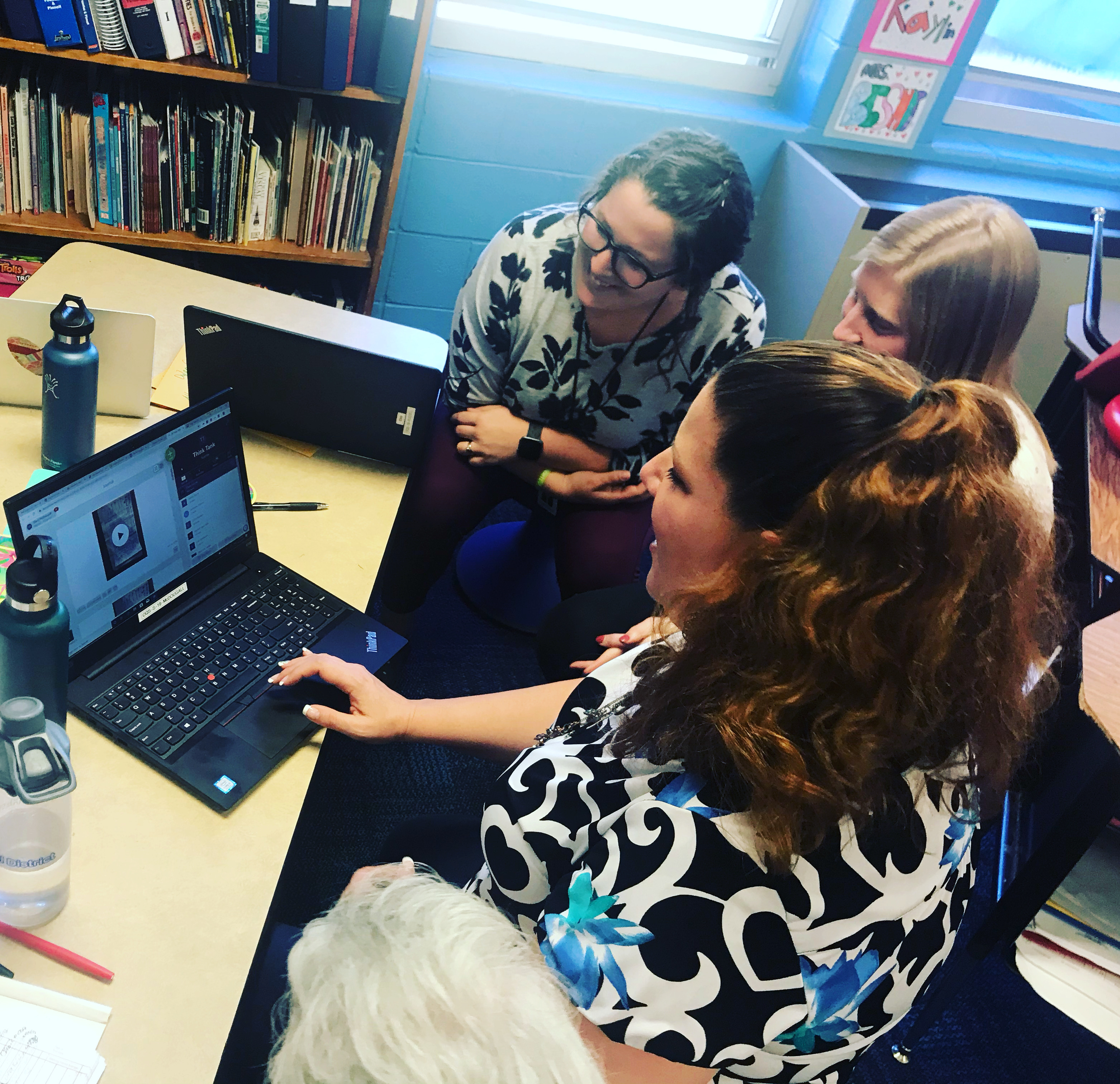Seeing students for who they are and what they can do
We’re all still looking at various tools for building PLPs with our students but one thing we can all agree on is the power of PLPs to let us more clearly see our students, and learn more about them as individuals. Let’s look at two schools building PLPs and digital portfolios in Seesaw and check out how they’re using this tool to know their students better.
“Look there I am!”
“Dad, I hope you are proud of me.”
“You mean I can post a picture of my hockey team?”
There are student comments I have heard in the last two weeks, in schools I have been working in. The commonalities are stunning: students exclaiming, smiling, satisfied. They are seen, heard, and known.
Let me back up.
The research
It’s become clear to educators and researchers that seeing and valuing our students for who they are — right now, each day — has powerful effects.
Take this study about greeting students by name at the door. Simply starting each day with this has been linked to fewer disruptions and higher engagement. Which is no shock, because we know that developing relationships with students is critically important, and this is one way to support this.
Or this one about the power of having a gay/straight alliance group at your school. The Smithsonian shared a study that illustrated having a GSA at schools reduced discrimination and suicide rates for all students.
The commonality here? Students are seen, heard, respected, and valued.
While this Edutopia article discusses how teachers are making sure they know personal information to be able to connect with each students, Vermont takes it further by having students tell their own stories of their learning lives, both in and out of schools, in the PLP.
Examples from schools
Next, we focus on how schools are making students’ lives and learning visible.
Sutton School

The sixth graders settled into their seats with mild curiosity. They had seen me before, but not in front of the class. On this rainy fall day, Kelly Mulligan and I were going to launch PLPs.
It felt like a big task.
We started with a slideshow with the focus of the PLP as a way to tell your story. Show who you are, inside and outside of school. I asked them to imagine something about their lives that their teachers doesn’t know. They didn’t need to share it out loud, but something important about their lives that could be shared with the teacher.
They paused, thoughtful. A few of them shared what they were thinking. Then we showed this video from Harwood Union School and asked these prompts:
Some kids shifted in their seats. They saw that their home life, their interests, often that are not celebrated in schools, could be noted, validated, and celebrated in this new format.
One students said, “Like you mean how I work on cars in the mornings with my dad?”
YES.
Or how I am the goalie of our hockey team, and we are state champions?
YES.
Or how I love to fix computers and code?
YEP.
You get the idea. The power of validation and choice spread.
Then we used Seesaw, and gave them choice. Use these tools to show us who you are. Here are a few suggestions for activities, but you can post what you think is best to describe what you love, what you do, how you learn, and who you are.
What I saw next was 100 percent engagement, and students popping up to help each other with the tools.
I heard a special educator say, “I didn’t know you were a goalie, that must be really challenging.” (Relationships! See earlier research).
Ottauquechee School

Next up, I was in a co-teaching teacher meeting of third grade teachers at Ottauquechee School. In came Staci McDougall, special educator. She was showing the rest of the team how she used Seesaw to support her students. What I saw next was incredible. She showed a video on Seesaw of a mostly non-verbal student who was engaging with math manipulatives. In the video, he exclaimed, he found numbers, he showed his thinking and work. The teachers were spellbound and teary. They hadn’t seen him this focused, or this engaged, ever. This video had been shared with his parents immediately, and now with his teachers, who see what he can do when barriers are removed.
Earlier that day, I had stopped by Staci’s room, at the exact moment I saw a student with her phone held right up to his mouth. The student said,
“Hi dad! I hope you are having a good day. I made it all day in class today and I hope you are proud of me! Love you dad.”
This was his 18th day of staying in class all day, and before this plan, he had not been able to stay in class with other students. The pride in his voice was clear, and took my breath away. I wondered, how many negative phone calls had this dad received before this? What is the power of regular positive calls and posts on a student and family that has experienced a lot of negative interactions with school?
These two uses of PLPs in Seesaw: as a behavior plan support, and as a tool to increase access and share learning with students with intensive needs, were new to me, but the ideas were not. PLPs, tied with regular family communication, are a tool to help everyone see students, make their lives visible, and are for everyone: caregivers, teachers, and community partners, and help all see students for who they are and what they can do.
Seesaw as a tool
The commonality here was that both schools were using Seesaw as a tool for digital portfolios and PLPs. The benefits of this tool are clear:
Benefits?
- It is very easy to use, students can set it up and get going with posting in about 30 minutes or less. Students can login with their school google email tools or a QR code.
- It is very intuitive, and looks like a social media feed, but it totally private between the student, caregivers and teachers.
- Teachers can set up folders that students can tag their posts to to develop a PLP or portfolio organization system.
- And students can explore developing other aspects of their portfolio as PLPs in Seesaw, such as personal and academic goals and college and career explorations.
- Families access the portfolio through an app on their phones, so there is no need for computer access. Caregivers are notified every time their child posts something to the portfolio and can interact with the post. This creates a quick and regular feedback loop for families and reduces the need to find and return the papers (which is hard for all).
- Use of this tool reduces barriers to the demonstration of learning. Students can pick a tool to demonstrate their reflections and learning, such as video, notes, photos, and art. Almost immediately, I saw the benefits of this. Students did not have to wrangle digital tools to increase access, they were readily available to all, just like the Universal Design for Learning calls for.
- To create 100 percent access to family conferences, students could rehearse for their student led conferences with the video feature of Seesaw. That way, if a family can’t attend the conference, they could at least see the presentation via video, and interact with their student through the post.
Ideas for use
Seesaw could also be used as an everything space, where students across curricular subjects learn how to document and reflect on their own learning. Then, they could curate a portfolio of work to share at student led conferences, and these could be created anywhere, in Google slides, a Google site, or other tool. You could link and access these on PLPs in Seesaw as well.
The power of being seen, to tell your own learning story, to show who you are and what is important to you, is universal.
How can we make sure each one of our students feels seen, known, and valued?


